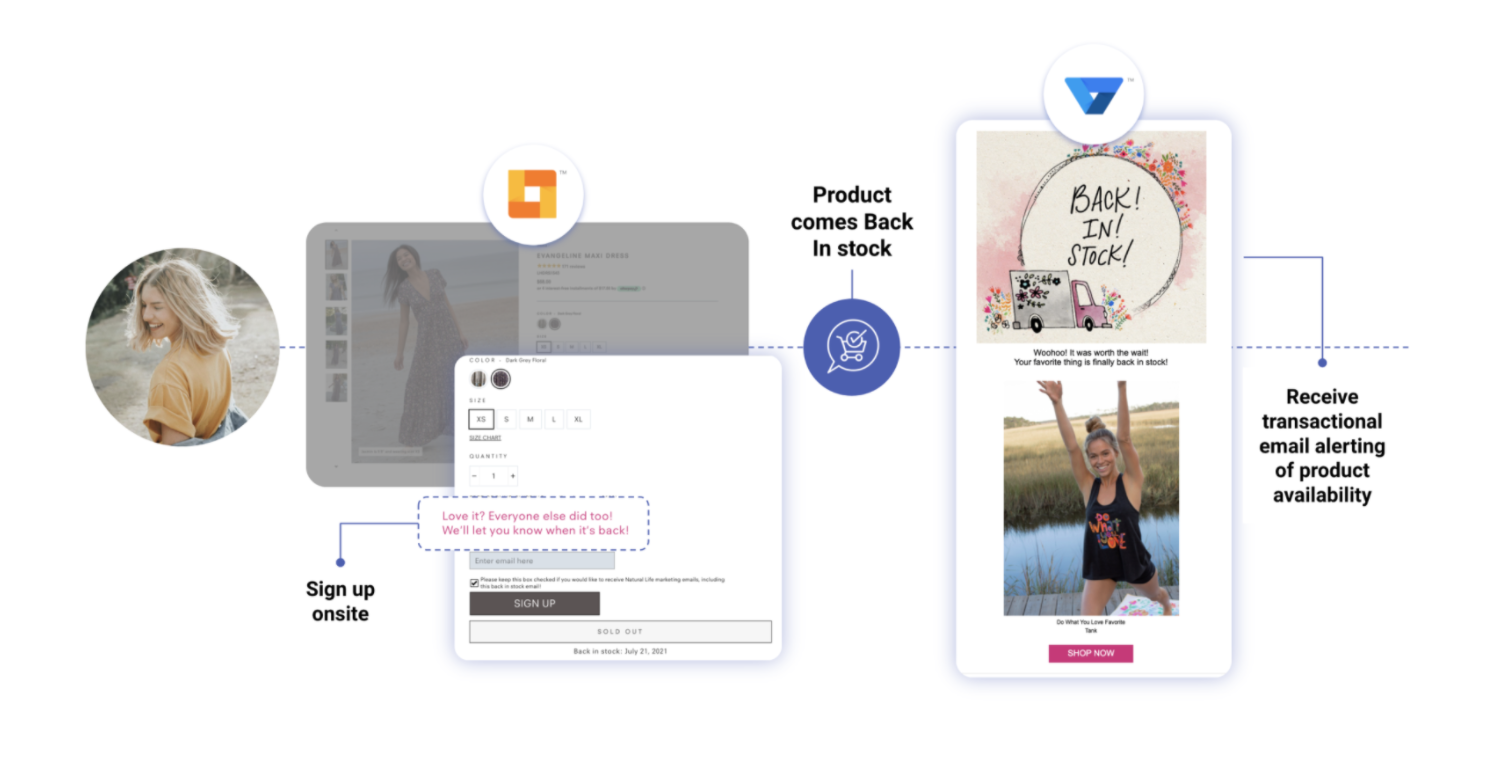
4 Inventory Problems Marketing Can Actually Solve
We’ve seen the headlines. But how are you?
As if the strange waters of the 2020 holiday season weren’t tricky enough for retailers to navigate, we’re back with perhaps an even more challenging tide ahead — the inventory apocalypse. Every day a new story in the press reintroduces the doom and gloom of the season (think ‘disaster’ and ‘uncertain future’) and the implications of the inventory crisis not only over the next few months, but well after the holiday season is over.
In what’s projected to be a 1.3 trillion dollar season, the demand is going to be high. That, married with container shortages, flooding and COVID-19 causing factory closures creates a perfect storm for retailers. The problem only gets worse when media outlets are urging shoppers to buy now, because products they want soon won’t be available.
And shoppers won’t compromise on less-than-amazing digital experiences this season.
How is your marketing strategy related to inventory management?
n the era of personal commerce, shoppers have come to expect always-on experiences that are tailored to their preferences — with no patience for misinformation or miscommunication.
This inventory problem prevents brands from being able to connect shoppers with the product they want or worse, connects shoppers with products that are unavailable. Sending mixed marketing messages about product availability will quickly frustrate shoppers. A negative experience like this has the potential to greatly affect the bottom line of a brand, with 88% of shoppers saying that a negative experience will cause them to abandon the brand completely.
But we still believe in holiday magic.
And the magic is the combination of our shoppers and our products. The data that retailers collect on shoppers and their behavior is a gift that keeps giving (in real time). Think about any time a shopper interacts, browses, clicks, opens, reviews — the list goes on and on. Shoppers are giving us all of the data we need to creatively problem-solve roadblocks that we couldn’t begin to imagine we could solve before the age of ecommerce.
The other ingredient to our magic potion is our product catalog. Think of all of the details of each product in your catalog — color, texture, category, size, material, shape, stock status, price. By connecting all of your products’ attributes with all of your shopper preferences and behaviors, you can determine which products those shoppers will be more inclined to buy — and depending on the stock and inventory levels of each of your products, when they will be available to those shoppers.
This real-time visibility from the 360° view of the dynamic relationship between shoppers and products, including inventory levels for products that shoppers may or may not be interested in, provides critical insights for communicating with shoppers. Especially during a period of inventory uncertainty.
4 ways marketing can bolster your inventory management strategy
Some marketers might feel powerless to help their businesses control the growing supply chain problem. However, marketers and ecommerce teams are armed with that 360° view of product and shopper data to get creative about shopper outreach, messaging and notifications that can be activated on a cross-channel basis. With a little bit of that creative thinking, you can ensure that there are no gaps in customer experience while shoppers wait for products to restock and explore undiscovered products in your catalog.
So don’t be overwhelmed by those headlines. With the right tools and strategies, you can grow revenue, preserve customer experiences, and save your customer service team a big headache. Read our 4 tips below to help you combat some of your inventory problems proactively with an eye toward the future and the customer experience at the center.
Problem #1: Shoppers are getting ads for products that are out-of-stock
The Solution: Activate your product catalog
There’s nothing more frustrating than receiving ads or emails for products that you love, only to discover that they’re out of stock. With a living product catalog that connects to your marketing outreach in real-time, you won’t risk frustrating shoppers. Take NOBULL, for example. With a business model built on limited drops, they had difficulty managing shopper expectations with products that were limited stock. Without the ability to customize merchandising triggers around inventory engagement and filter out any products that were out of stock or low inventory from their outreach, they were sending ads to shoppers for products that were out of stock. By connecting their channels with a living product catalog on one retail intelligent platform, the NOBULL team was able to control messaging with a system that automatically acted on those catalog updates.

Problem #2: We have a lot of inventory for products no one is buying
The Solution: Boost discovery across channels
Not every shopper will want every one of your products. But with a deep understanding of your product catalog and your shoppers’ preferences, you can find the perfect match for in-stock products that are getting a little less love. There are a few ways you can boost the discoverability of in-stock products to shoppers.
First, you should start with products that have less views on your site but have high conversion rates relative to those views. Once you identify your high-converting products, you can surface them to boost visibility across your site, email and paid media to customers with a preference for those products based on their activity and browsing behavior.

Another tactic for surfacing in-stock products to your shoppers is by breaking down your shoppers who are more likely to purchase by category. If you have a subset of shoppers who are actively exploring a denim jacket that is out of stock, launch a campaign that will surface in-stock denim jackets to your shoppers as an alternative to those that may be out of stock. If you’re looking to offload inventory, pick a high-stock category on your site, determine which shoppers have an affinity for that category, and send them an email or SMS message with relevant personalized product recommendations.

Problem #3: I have items that are coming back soon, but I’m afraid shoppers will lose interest
The Solution: Launch back in stock notifications with shopper intent.
With an email capture pop-up or modal on your site that offers shoppers the option to offer their email and be notified when something is back in stock, you can identify shoppers who are more likely to convert than with generic back in stock emails that target shoppers that viewed, searched for or carted a product that went out of stock. Shoppers that enter their emails onsite for a back-in-stock notification will be reminded of the exact size and color of the item they wanted, rather than the more generic back-in-stock notification.
As soon as the product is back in stock, this triggered email is deployed to this group of customers to capitalize on pent up demand. For instance, when the customer receives an email that says a product they’re interested in recently sold out but is now back in stock, they’re likely to feel a sense of urgency that propels them to purchase. FOMO is a powerful motivator.

Problem #4: Shoppers become frustrated when products they add to cart go out of stock
The Solution: Low inventory alerts
A low inventory trigger can help create urgency for shoppers to snap up those final few units, especially in the midst of inventory shortages. Best of all, running this type of campaign doesn’t have to be a headache for your marketing team. With a platform that relies on a living product catalog to power merchandising triggered emails (rather than a product feed), you can automate this email campaign and ensure it is sent to a targeted audience based on past behavior and predicted affinities.

Equally as important, the living product catalog ensures the most accurate, up-to-date data always gets pulled into emails so that customers don’t click through only to find out the product actually sold out yesterday — before the email even sent.
Stay close to your shoppers this holiday season
The reality of this holiday season is that you might not be able to deliver each shopper’s exact wishlist. But your shoppers don’t expect you to have every item in every color and style in stock, all the time.
What your shoppers do expect is to be able to trust your brand to deliver accurate information so they can stay engaged and up-to-date. So don’t let inventory woes erode the brand trust you work so hard to build every day. By leveraging your product catalog and your shopper data, you can manage expectations, take control of your brand’s messaging and survive the season.





